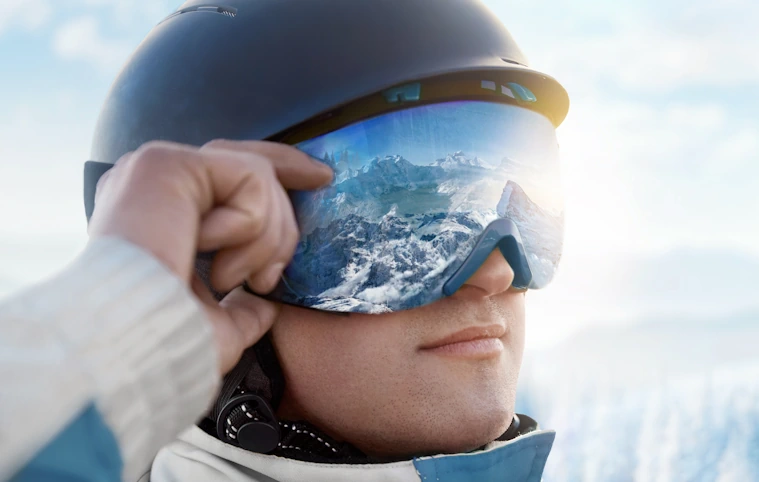The future of technology and innovation within skiing
As winter sports enthusiasts eagerly await the arrival of each ski season, they can also look forward to exciting advances in ski equipment technology that will improve the overall experience on the slopes. In recent years, the ski industry has seen a surge in innovation, with manufacturers pushing the boundaries of design and engineering to create cutting-edge gear. From smart glasses to revolutionary materials, the future of ski gear is poised to change the way we navigate down the slopes.
1. Smart ski equipment
One of the biggest trends in future skiing lies in the integration of smart technology into traditional ski equipment. For example, smart goggles have developed beyond simple UV protection and anti-fog functions. New models have augmented reality (AR) that provides real-time information on speed, altitude and even navigation assistance through built-in GPS system. These advances not only increase safety, but also add another layer of excitement to the skiing experience, turning skiing into a digital game.Similarly, smart ski bindings are gaining ground, with sensors built in to monitor pressure distribution and skiing technique. These bindings can provide valuable insight into a skier's technique, allowing for personalized feedback and suggestions for adjustments to be made. As technology continues to evolve, we can expect further integration with artificial intelligence and machine learning to refine these smart features and create a more intuitive skiing experience.
2. Advanced material for improved performance on the slopes
In the quest to improve the performance for the skier, ski manufacturers are exploring the use of advanced materials that can revolutionize the design and construction of the skis. For example, carbon fibre has become a common material in advanced ski construction, providing an improved balance between strength and weight. In future developments, we will see more of the use of graphene, a super strong and light material that has the potential to redefine how skis are designed in the future.In addition, 3D printing creates new opportunities in the industry, enabling the creation of more customizable shapes and structures on the skis. Skiers may soon be able to tailor their skis to their specific preferences, optimizing performance for different terrains and skiing styles. The use of innovative materials and manufacturing techniques will push the boundaries of what is possible on the slopes, offering skiers a more personalized and tailored experience.
3. Climate-sensitive equipment
With climate change affecting snow conditions and the ski season, manufacturers are focusing on developing gear that is more climate-friendly for different environments. Adaptive ski technology, which includes adjustable ski shape and smart solutions for shaping the skis, allows skiers to better optimize their equipment for specific snow conditions. This adaptability ensures that you can have the right skis at all times, even with changing weather patterns.In addition, environmentally conscious materials and production methods are becoming more prominent. Sustainable ski equipment, made from recycled or environmentally friendly materials, is becoming increasingly popular among environmentally conscious skiers. As the industry recognizes the impact of climate change on winter sports, the future of ski technology is likely to embrace more sustainability and eco-friendly practices.
4. Augmented Reality (AR)
The integration of augmented reality (AR) into skiing is poised to revolutionize the way skiers navigate the slopes. AR ski goggles can deliver digital information directly into the skier's field of vision, providing real-time navigation, interactive piste maps and even gamified challenges. This not only adds another element of excitement and play, but also increases safety by offering clear guidance in unfamiliar terrain.Imagine skiing down a mountain while virtual markers guide you through the best routes or challenge you to navigate through virtual slalom gates. Augmented reality has the potential to transform skiing into an exciting and interactive experience that will attract a new generation of tech-loving enthusiasts to the slopes.
5. Enhanced security features
Safety has always been a high priority in skiing, and the future of ski technology is no exception. Advanced safety features are incorporated into ski equipment to reduce the risks associated with steep descents and unpredictable mountain and forest terrain. Smart helmets, equipped with impact sensors and communication systems, can detect potential collision objects and send warnings to nearby skiers. In addition, vests equipped with airbags designed to inflate in the event of a crash are increasing in popularity, providing an extra layer of protection in the event of a hard fall.In addition, advances in avalanche safety technology contribute to a safer experience for those who enjoy off-piste, freeride and freetouring. Avalanche airbags, transceivers and other types of communication devices are becoming standard equipment for off-piste enthusiasts, ensuring that skiers are better prepared to navigate challenging and unfamiliar terrain.
